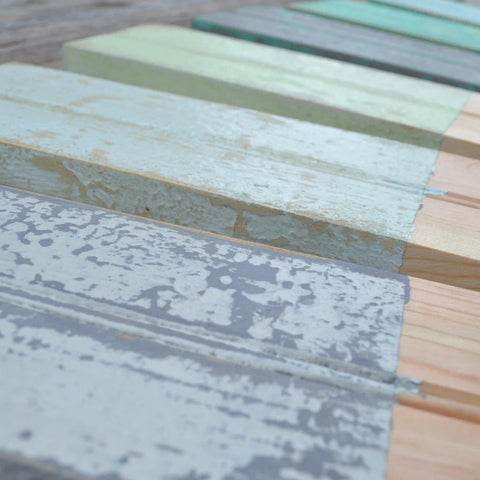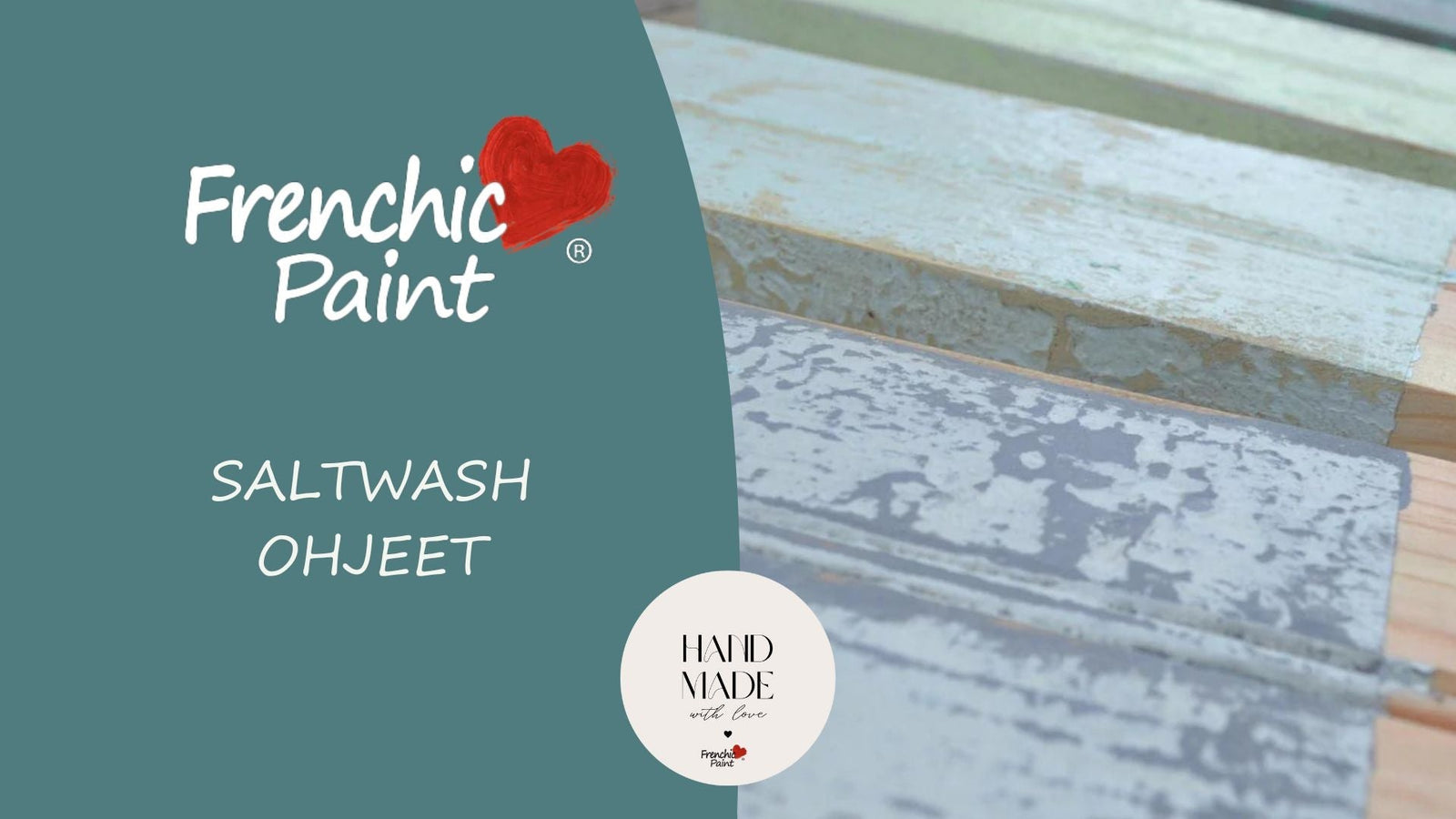Distressed furniture – do you like patina and aged looks?
Saltwash is a new powder mixed into paint that lets you create stunning textured patina surfaces together with paint. A style favored by professionals and home painters alike: distressed paint surfaces in interior painting are popular, and Frenchic paints are perfect for this technique.
With Saltwash, you can create patina and aged surfaces even on new furniture.
You can work Saltwash paste with a brush, spatula, comb, or palette knife./
Saltwash is also suitable for texture on paintings when applied directly to canvas.
With this technique, you can easily achieve a stylish aged or bohemian worn surface on any furniture or surface. Just decide where on the furniture you want to start!
Make the paste thick or thin – test and experiment!
You can creatively use this technique too – either subtly or with heavy distressing.
Whether your furniture is a 1930s flea market find or a typical Ikea piece, you can completely transform it using high-quality chalk paint designed for furniture and various painting techniques.
The distressing technique is easiest to apply to decorative furniture; it beautifully highlights the ornaments and shapes of the piece.
But also try distressing on rectangular furniture, edges of drawers, the edge of a table top, etc.
You will need at least these:
- Sanding tools
- Waxes
- Saltwash
- Brush
- (Spatula or comb)
At its simplest, wear marks can be made by sanding the edges and decorations of the furniture a little - try it!
Next, you can wax the sanded wear marks with brown wax, which further enhances the patinated, aged appearance.

Saltwash
Saltwash is a powder mixed into paint to make a thick paste that gives the surface a beautifully patinated look!
In this technique, the effect shown in the picture is achieved with two different shades of paint.
Start like this
Steps briefly:
Add Saltwash paint paste
Paint the top shade over the dried paint paste using a new shade and finally sand the layers and paste to reveal them.
Simple and easy.
MIX SALTWASH AND PAINT

Pour the paint into the mixing container first, then gradually add Saltwash powder.
The mixing ratio is about 1:1, depending on how thick a paste you want and which tool you want to work with. Experiment.

Mix a small amount first and test the coverage.
Mix Saltwash powder into the paint; a good consistency is a thick, non-dripping mass.
Brush, dab, or lift the mass onto the furniture surface so that all the "peaks" and "spikes" of the mass remain visible. Finally, gently "smooth" the peaks with a brush in long strokes.


Paint over with your desired shade and let dry.
SANDING
Now comes the fun part, sanding the Saltwash layers.
It's time to reveal all your beautiful Saltwash powder layers.
We recommend an electric sander, especially for larger furniture and flat, large surfaces, but hand sanding is also sufficient, especially for smaller areas and edges.
Typically, 100-120 grit sandpaper works best to reveal just the right amount of Saltwash® primer layer.

A very important tip is the sanding phase.
Sanding is the "ta-da" moment when all the beautiful Saltwash® layers are revealed, so this is a really important step.
If you really want to create an authentic look, you should think about "how this piece or surface naturally wears over time" and perhaps pay extra attention to this area when sanding.
For example, you can imagine that the front edge of the dresser's top wears more over time as hands or objects rub and wear it down. The same could be imagined around door handles, drawer pulls, or the corners of the piece, where it would get a lot of natural wear from being pulled and possibly bumped over the years.
FINISHING WITH WAXES
After sanding the Saltwash paint layers, if you want to create an aged patina that looks even more authentic, try applying colored wax to the piece.
Simply wipe wax onto the piece's surface so that the dark wax settles between the Saltwash® powder layers. Wipe off any excess wax with a clean, soft cloth.










